Class 10 Exam > Class 10 Notes > Physics for GCSE/IGCSE > Transverse & Longitudinal Waves
Transverse & Longitudinal Waves | Physics for GCSE/IGCSE - Class 10 PDF Download
Introduction
- Waves are repeated vibrations that transfer energy.
- Waves can exist as one of two types:
- Transverse
- Longitudinal
Transverse Waves
- In transverse waves, points along their length oscillate perpendicular to the direction of energy propagation.
- Energy transfer occurs perpendicular to wave motion.
- They convey energy without displacing the particles of the medium.
- Transverse waves can traverse solids and liquid surfaces but not penetrate liquids or gases.
- Certain transverse waves, like electromagnetic waves, can propagate through solids, liquids, gases, and even vacuum.
- The highest point on the wave above the rest position is called the peak or crest, while the lowest point below the rest position is termed the trough.
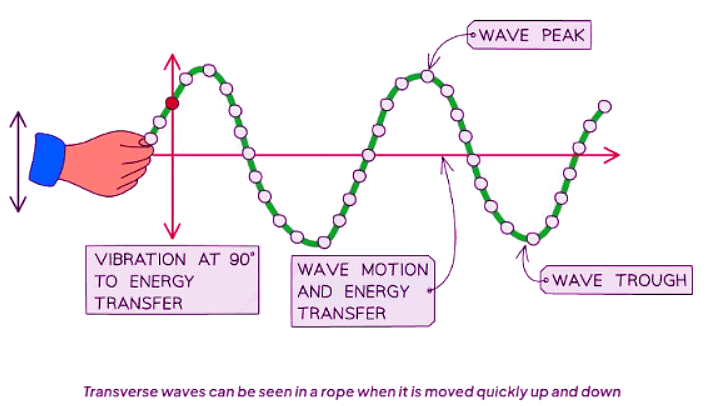
- Examples of transverse waves include:
- Ripples forming on the surface of water.
- Vibrations occurring on a guitar string.
- S-waves, a category of seismic wave.
- Electromagnetic waves, encompassing radio waves, light, X-rays, and others.
Representing Transverse Waves
- Transverse waves are typically illustrated as a single, unbroken line.
- A central line indicates the undisturbed position.
- Curves on the diagram are drawn perpendicular to the direction of energy transfer.
- These curves represent the peaks and troughs of the wave.
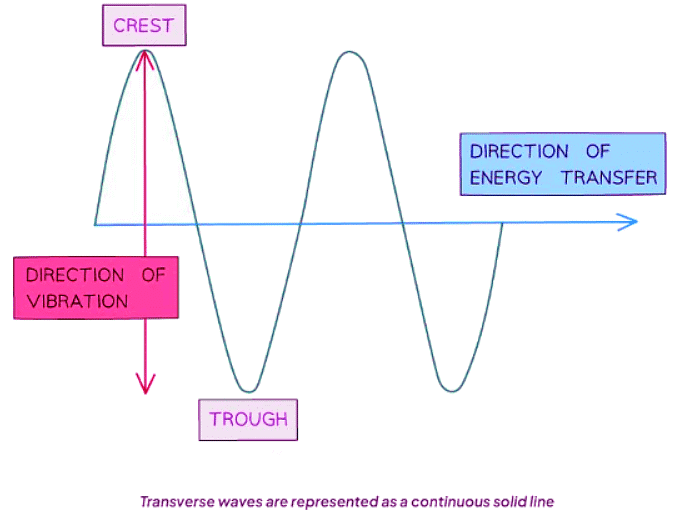
Question for Transverse & Longitudinal WavesTry yourself: Which of the following is an example of a transverse wave?View Solution
Longitudinal Waves
- Longitudinal waves are described as:
- Waves in which points along their length oscillate parallel to the direction of energy propagation.
- Energy transfer occurs in the same direction as the wave's motion.
- They transmit energy without displacing the particles of the medium.
- Longitudinal waves can propagate through solids, liquids, and gases.
- However, they cannot travel through a vacuum due to the absence of particles.
- Key characteristics of longitudinal waves include:
- Regions where points are close together, termed compressions.
- Regions where points are spaced apart, known as rarefactions.
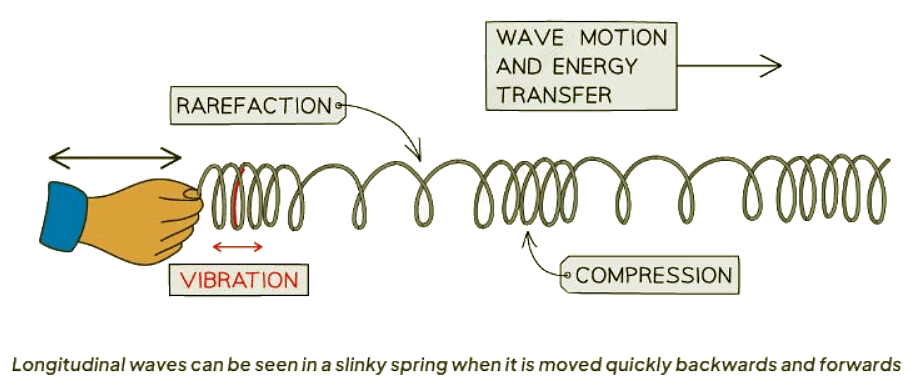
- Examples of longitudinal waves include:
- Sound waves.
- P-waves, a category of seismic wave.
- Pressure waves resulting from repetitive motions within a liquid or gas.
Representing Longitudinal Waves
- Longitudinal waves are commonly represented by multiple lines on a diagram.
- These lines indicate the wave's movement parallel to the direction of energy transfer.
- Bringing the lines closer together on the diagram signifies compressions.
- Conversely, spacing the lines further apart represents rarefactions.
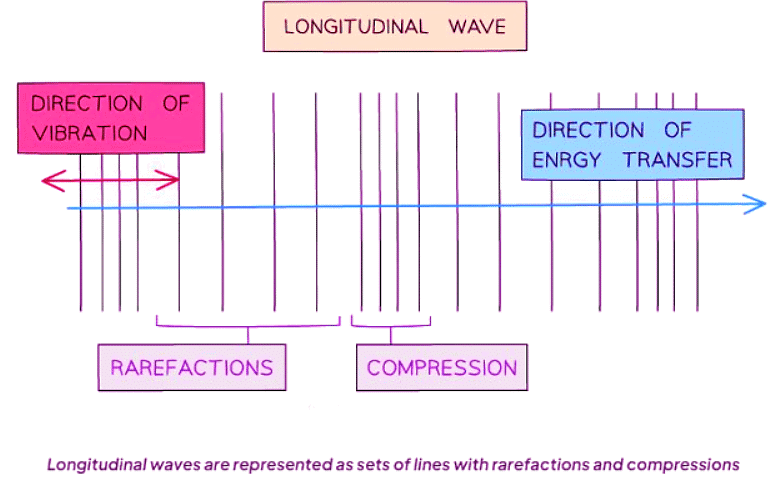
Difference between Longitudinal and Transverse Waves
The different properties of transverse and longitudinal waves are shown in the table: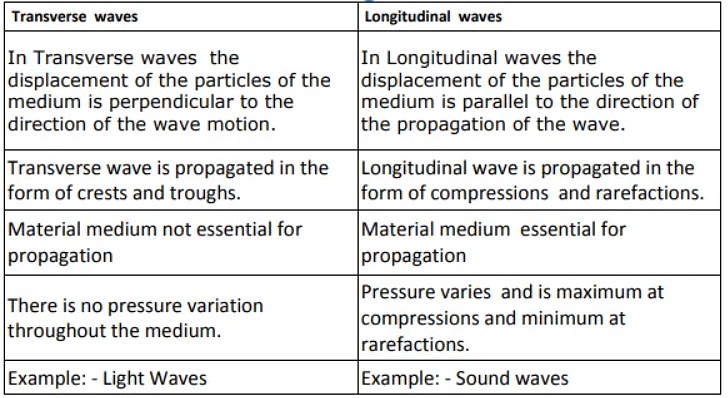
The document Transverse & Longitudinal Waves | Physics for GCSE/IGCSE - Class 10 is a part of the Class 10 Course Physics for GCSE/IGCSE.
All you need of Class 10 at this link: Class 10
|
129 videos|188 docs|35 tests
|
FAQs on Transverse & Longitudinal Waves - Physics for GCSE/IGCSE - Class 10
| 1. What is the difference between transverse and longitudinal waves? |  |
Ans. Transverse waves move particles in a perpendicular direction to the wave's energy transfer, while longitudinal waves move particles in the same direction as the wave's energy transfer.
| 2. Can you provide examples of transverse waves? |  |
Ans. Examples of transverse waves include light waves, water waves, and seismic S-waves.
| 3. How do longitudinal waves propagate through a medium? |  |
Ans. Longitudinal waves propagate by causing particles in the medium to move parallel to the direction of the wave's energy transfer.
| 4. What are the similarities between transverse and longitudinal waves? |  |
Ans. Both transverse and longitudinal waves transfer energy through a medium without permanently displacing the particles of the medium.
| 5. How are sound waves classified - transverse or longitudinal? |  |
Ans. Sound waves are classified as longitudinal waves because they cause particles in the medium to vibrate parallel to the direction of the wave's energy transfer.
Related Searches




















